
Carl August Sandburg was an American poet, biographer, journalist, and editor. He won three Pulitzer Prizes: two for his poetry and one for his biography of Abraham Lincoln. During his lifetime, Sandburg was widely regarded as "a major figure in contemporary literature", especially for volumes of his collected verse, including Chicago Poems (1916), Cornhuskers (1918), and Smoke and Steel (1920). He enjoyed "unrivaled appeal as a poet in his day, perhaps because the breadth of his experiences connected him with so many strands of American life". When he died in 1967, President Lyndon B. Johnson observed that "Carl Sandburg was more than the voice of America, more than the poet of its strength and genius. He was America."

Henderson County is a county located in the U.S. state of North Carolina. As of the 2020 census, the population was 116,281. Its county seat is Hendersonville.
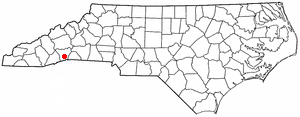
Flat Rock is a village in Henderson County, North Carolina, United States. The population was 3,114 at the 2010 census. It is part of the Asheville Metropolitan Statistical Area.
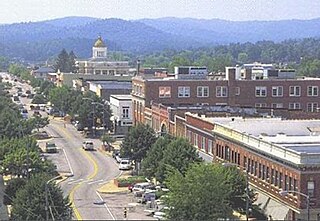
Hendersonville is a city in Henderson County, North Carolina, United States. It is 22 miles (35 km) south of Asheville and is the county seat of Henderson County. Like the county, the city is named for 19th-century North Carolina Supreme Court Chief Justice Leonard Henderson.
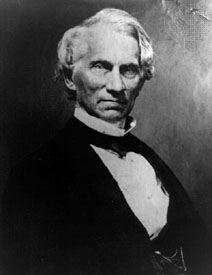
Christopher Gustavus Memminger was a German-born American politician and a secessionist who participated in the formation of the Confederate States government. He was the principal author of the Provisional Constitution (1861), as well as the founder of the Confederate financial system. As the first Confederate States Secretary of the Treasury, Memminger was the principal author of the economic policies of Jefferson Davis's administration.

The Jimmy Carter National Historical Park, located in Plains, Georgia, preserves sites associated with Jimmy Carter, 39th president of the United States. These include his residence, boyhood farm, school, and the town railroad depot, which served as his campaign headquarters during the 1976 election. The building which used to be Plains High School serves as the park's museum and visitor center. As Carter lives in Plains, the area surrounding the residence including the burial site of former First Lady Rosalynn Carter (1927–2023) is under the protection of the United States Secret Service and is not open to the public.
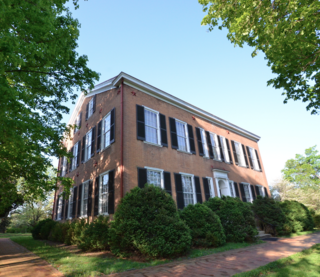
My Old Kentucky Home State Park is a state park located in Bardstown, Kentucky, United States. The park's centerpiece is Federal Hill, a former plantation home owned by United States Senator John Rowan in 1795. During the Rowan family's occupation, the mansion became a meeting place for local politicians and hosted several visiting dignitaries.

The Central Experimental Farm (CEF), commonly known as the Experimental Farm, is an agricultural facility, working farm, and research centre of the Science and Technology Branch, formerly the Research Branch, of Agriculture and Agri-Food Canada. As the name indicates, this farm is centrally located in and now surrounded by the City of Ottawa, Ontario, Canada. The 4 square kilometres (1.5 sq mi) farm is a National Historic Site of Canada and most buildings are protected and preserved as heritage buildings.
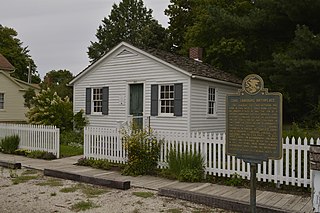
Carl Sandburg State Historic Site was the birthplace and boyhood home of author Carl Sandburg in Galesburg, Illinois, United States. It is operated by the Illinois Historic Preservation Division. The site contains the cottage Sandburg was born in, a visitor center with a museum about Carl Sandburg, a museum shop, a small theater, and the rock under which he and his wife Lilian are buried.

Grant's Farm is a historic farm, and long-standing landmark in Grantwood Village, Missouri, built by Ulysses S. Grant on land given to him and his wife by his father in law Frederick Fayette Dent shortly after they became married in 1848. It has also served as a residence of various members of the Busch family.

The Weigel House is a historic house built in 1893 at 2721 Asbury Road in Knoxville, Tennessee. It is also known as the Monday House, or the Osborne House. The house was constructed in the late 19th century in the Queen Anne style. It was one of the better-known homes of the Weigel family, who immigrated from Germany in the 19th century and were prominent in the dairy business, both in East and North Knox County, for generations. It is listed on the National Register of Historic Places as "Monday House" since 2001.
Oscar Gregory Stonorov was a modernist architect and architectural writer, historian and archivist who emigrated to the United States from Germany in 1929. His first name is often spelled "Oskar".

Ridgedale is a 19th-century Greek Revival plantation house and farm on a plateau overlooking the South Branch Potomac River north of Romney, West Virginia, United States. The populated area adjacent to Washington Bottom Farm is known as Ridgedale. The farm is connected to West Virginia Route 28 via Washington Bottom Road.

Craftsman Farms is a historic house located in Parsippany-Troy Hills, Morris County, New Jersey, United States. It was founded by noted early 20th century designer Gustav Stickley as a farm and school for the Arts and Crafts movement. It remained in use until 1915 when it was sold to a family and became a private house.

Flat Rock Historic District is a national historic district located at Flat Rock, Henderson County, North Carolina. The district encompasses 55 contributing buildings and 1 contributing site associated with estates centering on the ambitious summer houses of the prominent Charlestonians. The homes includes notable examples of Stick Style / Eastlake movement, Second Empire, and Gothic Revival residential architecture. Located in the district is the separately listed Carl Sandburg Home National Historic Site, also known as Connemara. Other notable estates include Mountain Lodge, Argyle, Beaumont, Tall Trees (Greenlawn), Many Pines, Chanteloupe, Teneriffe, Rutledge Cottage, Dunroy, Treholm-Rhett House home of George Trenholm, Kenmure (Glenroy), Vincennes home of William Elliott, Sallie Parker House, Enchantment, Bonclarken (Heidleberg), Saluda Cottages, Tranquility, and the Rhue House. Also located in the district is St. John-in-the-Wilderness church and rectory, the Old Post Office, Woodfield Inn, The Lowndes Place.
Connemara is a district in the west of Ireland. Connemara or Conamara may also refer to:
Georgia Bonesteel is an American quilter. She is the author of several books about quilting, as well as the former host of multiple television programs about quilting, most notably Lap Quilting with Georgia Bonesteel. She has been credited with inventing "lap quilting".

The Sandburg House is a private home located on Lake Michigan near Harbert, Michigan. It was listed on the National Register of Historic Places in 1972.
Penelope Ellen Niven was an American academic and biographer. As Penelope McJunkin, she worked at a Catholic school and multiple high schools by the late 1980s. During this time period, she worked for Earlham College and the University of Illinois, Urbana as part of the Sandburg Collection Development Project. As Penelope Niven, she was a fellow at Yale University during the mid 1990s. She also held writer-in-residence positions with Greensboro College and Salem College up to the 2000s.

Joseph Ellison Adger Smyth, known as E. A. Smyth was an American industrialist.



























